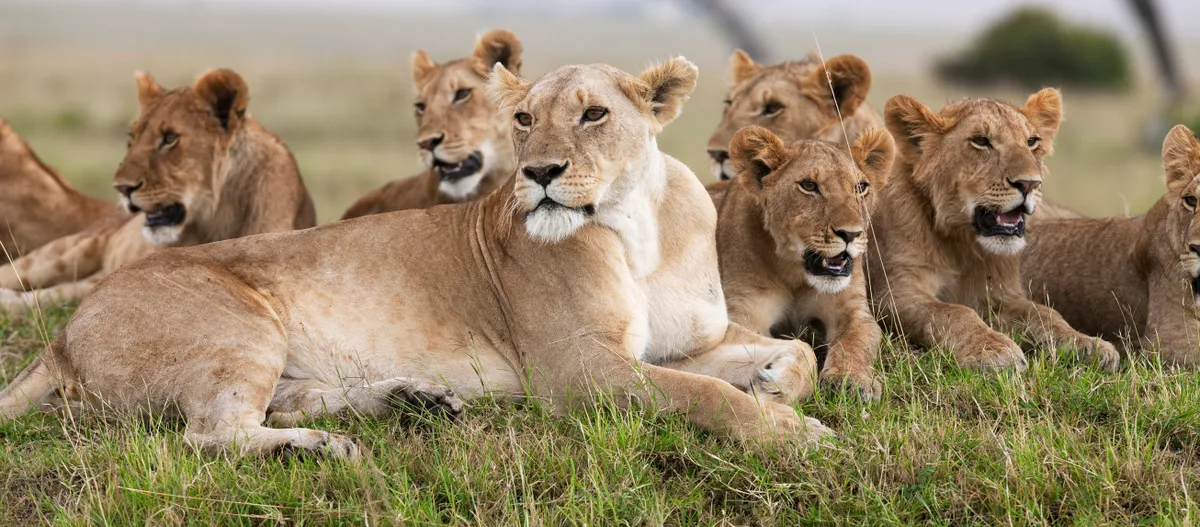While 'big cats', such as like tigers and lions, often dominate headlines and and our small screens, their smaller cousins – bobcats, ocelots and margays – are equally as fascinating, but more often hidden from view.
Here we explore the differences between big and small wild cats, from their physical traits and hunting techniques to their vocalisations and roles in the ecosystem. What sets them apart goes beyond size, and shows just how diverse the feline family is.
What do we mean by 'big cat' and 'small cat'?
The term 'big cat' is generally used to refer to any of the five members of the genus Panthera: the lion (Panthera leo), tiger (Panthera tigris), jaguar (Panthera onca), leopard (Panthera pardus) and snow leopard (Panthera uncia). Some organisations include pumas (also known as mountain lions and cougars) in their classifications, as well as cheetahs.
- Cheetah vs leopard: what's the difference between these beautiful, spotted cats?
- Pumas and cougars guide: what's the difference between them
The term 'small cats' encompass all domestic cats (Felis catus) and wild species, such as bobcats and ocelots.
Are big cats and small cats related?
All cats, large and small, fall under the family Felidae, which is divided into two main subfamilies: Pantherinae (big cats) and Felinae (small cats). Amazingly, all cat species share over 95% of their DNA. They all have a common ancestor dating back to around 25 million years ago when cats first evolved.
Can all cats roar and purr?

One of the biggest differences between the big cats in the genus Panthera and other cats is that the big cats can roar. They have a ligament in their voice box instead of the epihyal bone. The ligament can be stretched, creating a larger sound-producing passage.
For the cheetah, even though it is large in size, it has small-cat anatomy. The voice box form a fixed structure, with vocal cords that vibrate with both in and out breaths. This enables it to purr continuously, like house cats can, but prevents them from being able to roar.
Big cat vs small cat: conservation status
Many big cats are endangered due to habitat loss, poaching and human conflict. Lions and leopards are both classed as vulnerable and the Amur leopard, that lives in Russia, is classed as critically endangered, with only 100 left in existence.
As apex predators, lions, tigers, leopards and jaguars play a key part in the food chain. They keep other populations in check, preying on mammals such as zebras and wildebeest. By doing so, they help to protect grasslands from overgrazing and their habitat from degradation.
There are also small wild cat species that face threat from habitat loss and conflict with humans, similar to big cats. Four small cat species listed as endangered: Andean cat (Leopardus jacobita), Borneo bay cat (Catopuma badia), Flat-headed cat (Prionailurus planiceps), and Fishing cat (Prionailurus viverrinus).
Big cat vs small cat: domestication

Another profound difference between big cats and small cats is that only small cats have become domesticated. The domestic cat (Felis catus) descends from the African wildcat (Felis lybica), and scientists believe it has lived alongside humans for over 10,000 years.
- When India's grumpiest cat moved into a house in the Himalayas, the family who lived there moved out
Attempts to domesticate big cats have never succeeded - they remain wild at heart, and even those raised in captivity are unpredictable and dangerous. People still try to illegally domesticate small wild cats, such as the bobcat, without success.
Big cats vs small cats: social behaviour

One of the key differences between wild cats and domestic cats is the way domestic cats can form intimate social bonds with people, as well as with members of their own kind. Most big cats are generally more solitary than small cats, with lions being the exception, forming prides. Some small wild cats are known to form social groups, especially in environments with abundant resources.
Big cats vs small cats: hunting

All wild cats are carnivores and rely on nutrients found only in animal meat. There are significant differences between how big cats hunt, compared to their smaller relatives. The power and ferocity of big cats mean they can also hunt animals much larger than themselves. Small cats tend to seek out smaller prey, such as rodents, birds and reptiles, relying on stealth, agility and ambush tactics.
Discover more fascinating cat facts
- Why do cats play with their prey?
- Deadliest apex predators in the wild: which ruthless mammals are the best killing machines?
- Why do cats pounce?
- What’s the world's smallest cat? Meet the tiny felines barely bigger than a ruler
Main image: Getty Images